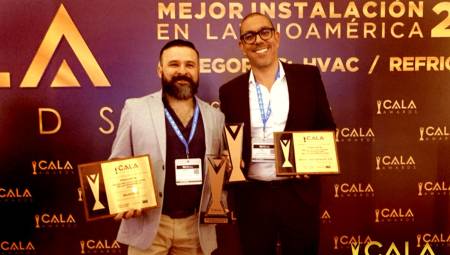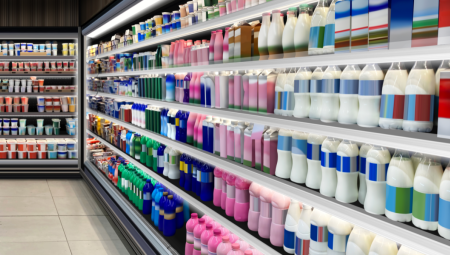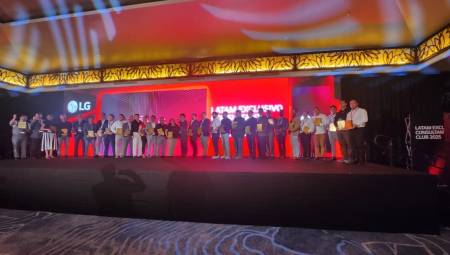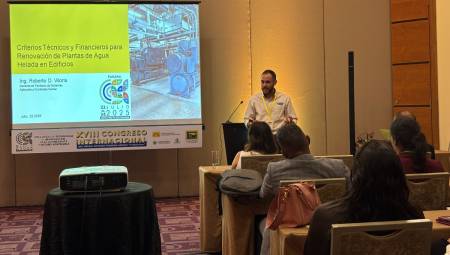 Today there is still debate about whether hydrocarbon-derived refrigerant gases are a viable alternative in Latin America. So far its use in the industrial and commercial sector has been very limited.
Today there is still debate about whether hydrocarbon-derived refrigerant gases are a viable alternative in Latin America. So far its use in the industrial and commercial sector has been very limited.
by: Vanesa Restrepo.
Refrigerants have undergone significant evolution with the entry into force of the Montreal Protocol. The industry has focused on finding concrete solutions to the problems of high electricity consumption, ozone depletion and global warming, in which air conditioning and refrigeration equipment have a great impact.
In the search for new solutions, natural alternatives, synthetic mixtures and other types of products with different characteristics have emerged. Today many of them have lost their validity, including Hydrofluorocarbons (HFCs) that came as a replacement for Hydrochlorofluorocarbons (HCFCs), since they have a high global warming potential.
Other solutions are glimpsed with a better future. Such is the case of ammonia, used in industrial facilities and some commercial applications; CO2 already used successfully in supermarkets in Europe, Australia and Brazil; and the hydrocarbons that command the stop in the vehicular air conditioning systems and domestic or commercial refrigerators of small and medium size.
Regarding the latter, there are divided opinions in the industry. While in some countries such as Colombia, Uruguay and Mexico the use of this type of gases for refrigeration in small commercial units is encouraged, in other places their applications are substantially reduced and they are almost restricted to the refrigeration line in homes.
A product with no future?
The benefits of hydrocarbons are several: in addition to the low global warming potential, they do not generate damage to the ozone layer, they are easily accessible and their cost is reasonable. However, being derived from petroleum are flammable elements, which could increase the risk in the facilities if proper safety precautions are not taken.
It is precisely this risk that has limited the implementation of these refrigerants. This is confirmed by the Argentine engineer Roberto Aguiló, new director of ASHRAE. "In Argentina, hydrocarbons are being used very little, practically only butane and propane in refrigerators," he explains and adds that in the industrial sector ammonia that has been used for several years predominates, as well as R-22 that has a smaller portion in a smaller market.
In Uruguay the situation is not much different. According to engineer Roberto Marvid, from the Ozone Unit of the Ministry of Housing, Territorial Planning and Environment, some household equipment with an almost finished useful life cycle is using low-quality hydrocarbons and mixtures of propane and butane. "R-600 is the most used gas in new equipment, as well as in some insulating foams with cyclopentane," said the official.
He added that that country is a pioneer in the development of hydrocarbons, and that much of the air conditioners that worked with R-12 have been converted to other gases such as propane or mixtures of 50 / 50 with isobutane and propane. This last mixture, says Marvid, enjoys great acceptance since it has thermodynamic characteristics similar to those of R-12.
Industrial applications in Uruguay, like those in Argentina, have not incorporated hydrocarbons, in part because of the quantity limitations of these products. "The industrial sector uses a lot of ammonia and R-22, which is gradually being replaced by the 400 series and the R-507.
The situation in Mexico is similar, despite the fact that in this country there is a manufacturer that is promoting the use of hydrocarbons, according to engineer Gildardo Yáñez, technical and IT manager at grupo Refrigerantes, who also stated that "the use of hydrocarbons is not widespread. What happens is that these systems cannot be charged more than 150 grams."
To illustrate this restriction, Yáñez alludes to the North American SEAL UL that sets the maximum flammable gases in refrigeration equipment at 50 grams for some applications and 150 grams as a maximum amount. This limit prevents efficient technologies from being created for the industrial sector, which consequently uses other refrigerants.
New applications
Despite refrigerant loading limitations, hydrocarbons have gained ground in the commercial sector. In Uruguay, in particular, the installation of refrigeration islands in shopping malls and supermarkets is growing: "these are cold islands in which foods that have been preserved with isobutane from the origin are refrigerated," explained Roberto Marvid, of the Ozone Unit of that country.
However, Marvid assures that there are no import references of showcases that work with hydrocarbons, and considers that one of the reasons for these lines not to be massified is related to the safety standards that must be followed for the handling of equipment with butanes, propane and isobutans.
Gildardo Yáñez also agrees that safety is a key element so that the use of flammable refrigerants does not generate risks to the user's health. "These facilities must not leak, if there is a gas leak it must have a certain speed and an alarm system that allows the site to be vacated and ventilated, to minimize the risk of explosion or ignition."
He adds that being flammable, these refrigerants cannot be used in equipment with accessories that carry nuts and recommends avoiding the common practice of loading elements with nuts and up to 10 or 15 kilos of flammable refrigerant. "People think that with that they can save energy, but what they are doing is ignoring all the safety regulations."
Clear advantages, strong competition
In vehicular air conditioning systems, changes from R-12 to R-134a are expensive. That is why some experts have implemented hydrocarbons in small quantities and with strict safety measures to prevent explosions.
Among the advantages identified in the group of hydrocarbon refrigerants, both for refrigeration and AC systems are:
1. Direct substitution or "drop in".
2. Lower cost and no need for new and expensive lubricants.
3. They do not affect the ozone layer.
4. Its global warming potential is much lower than that of other refrigerants.
5. They can be manufactured locally.
6. Facilities use on average 40% less refrigerant
7. They generate important conditions in the consumption of electricity.
But despite these benefits, the risk of explosion and quantity limitations makes hydrocarbons not a viable alternative in large commercial applications and industrial facilities. The experts consulted by ACR LATINOAMÉRICA agreed that in the coming years there will be great changes in the industry due to the arrival of HFOs and the massification of CO2.
Regarding the new HFO technologies, Roberto Aguiló explained that so far only the HFO-1234 used successfully in vehicular AC systems has been known, but emphasized that research and new developments do not stop.
That is why in Argentina the processes of reconversion of equipment have been stopped. "The changes to HFC are slowed down because it is very safe to take them out of the market. The retrofit has not been done to wait to see what happens to the refrigerants," he said.













